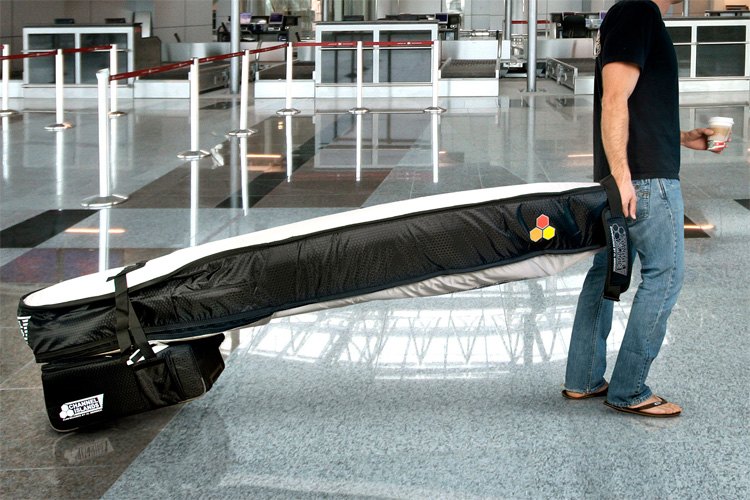Traveling with surfboards is like handling a Chinese vase. A small mistake can have huge consequences. Learn how to pack your surfboard bag and prevent damage during travel. Because surfboard packing is the art of transporting feathers.
Surf trips are always the best and most exciting moments of the year. Our well-deserved surf holidays always arrive with a mixture of anxiety, hope (to find dream waves), anticipation, and enthusiasm.
The last thing we need to see is a cracked surfboard or, in the worst-case scenario, a plank broken in two. Therefore, traveling with surfboards has its secrets and mysteries.
Yes, even if your beloved sticks meet the hands of baggage handlers.
Airline companies don't have a good reputation when it comes to carrying surfboards.
It's an old problem, but we can drastically reduce the chances of a polyurethane disaster.
Packing Surfboards 101
Here's what you should do when packing for a surf trip:
- Get a high-quality, heavy-duty surfboard bag: if you plan to travel with multiple boards, a coffin bag with wheels might work well;
- Remove all fins: it is easy to understand why - a flat board offers less contact with obstacles;
- Wax off your board: you don't want it to melt in hot surf destinations;
- Protect rails, tail, and nose with polyethylene foam pipe insulation;
- Cover the surfboard with plastic bubble wrap;
- Put your plank in a board sock;
- Add beach towels: it's the ultimate barrier against cracks;
- Add "Handle With Care," "Top Load," "Surfboard Inside," and/or "Fragile" stickers;
Remember that if you're stacking several boards on top of each other, the largest should always be on the bottom, with the wax side up.
Additionally, strap all boards together and add extra layers of padding between them - wetsuits, t-shirts, rash guards, and towels.
Take your time.
Carefully protecting your surfboards for long travels will reduce the episodes of drama, damage, polyurethane carnage, and ding repairs.
Accidents can happen anywhere - in an airplane and inside cars, cabs, or boats- so dedicate 10 minutes to surfboard travel protection.
Don't travel with your whole quiver. In most cases, two boards - a shortboard and a Malibu - will cover 90 percent of the average surfer's needs, and you don't need to pay for extra weight on a transatlantic flight.
